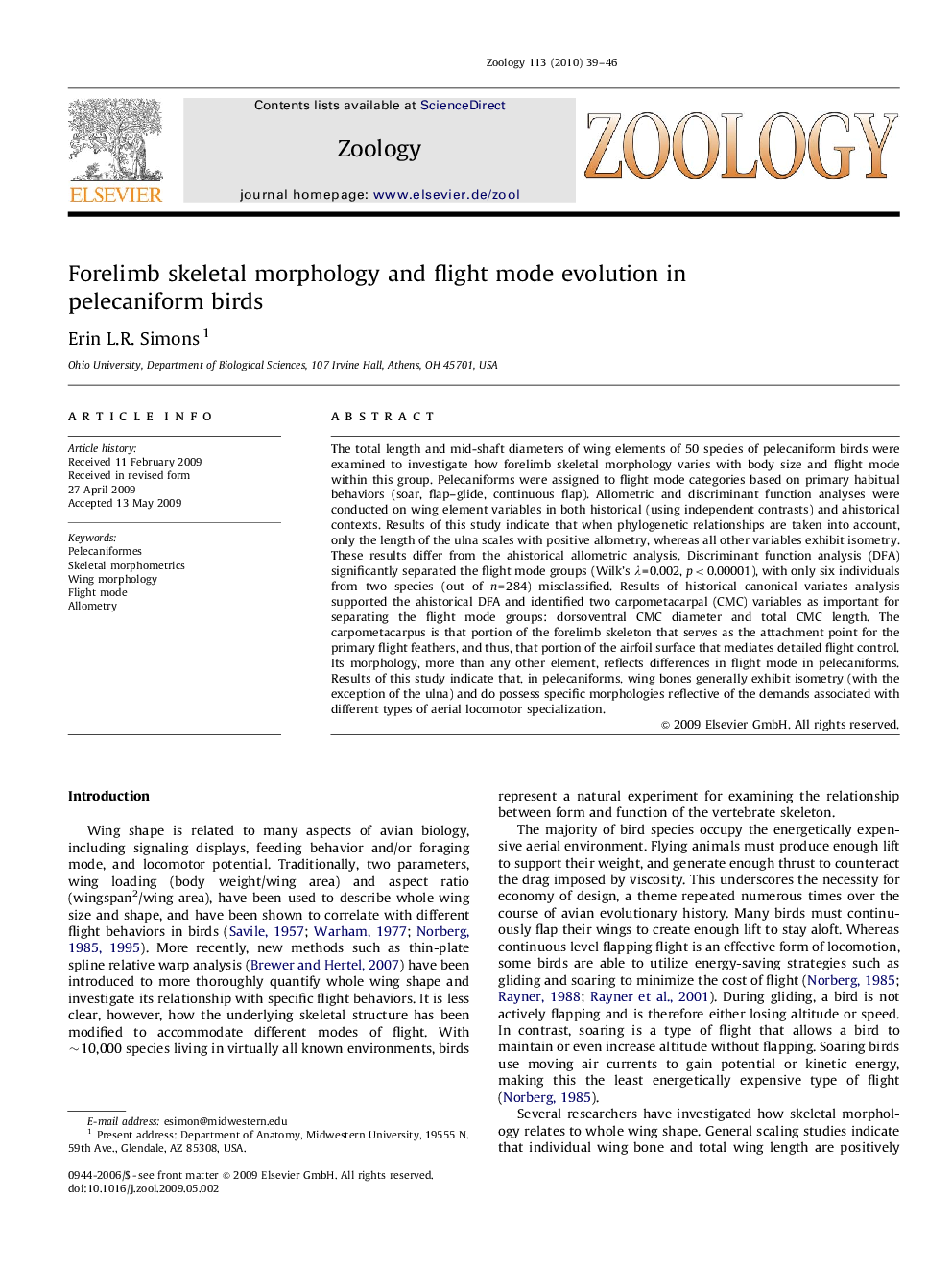| کد مقاله | کد نشریه | سال انتشار | مقاله انگلیسی | نسخه تمام متن |
|---|---|---|---|---|
| 2791258 | 1154861 | 2010 | 8 صفحه PDF | دانلود رایگان |

The total length and mid-shaft diameters of wing elements of 50 species of pelecaniform birds were examined to investigate how forelimb skeletal morphology varies with body size and flight mode within this group. Pelecaniforms were assigned to flight mode categories based on primary habitual behaviors (soar, flap–glide, continuous flap). Allometric and discriminant function analyses were conducted on wing element variables in both historical (using independent contrasts) and ahistorical contexts. Results of this study indicate that when phylogenetic relationships are taken into account, only the length of the ulna scales with positive allometry, whereas all other variables exhibit isometry. These results differ from the ahistorical allometric analysis. Discriminant function analysis (DFA) significantly separated the flight mode groups (Wilk's λ=0.002, p<0.00001), with only six individuals from two species (out of n=284) misclassified. Results of historical canonical variates analysis supported the ahistorical DFA and identified two carpometacarpal (CMC) variables as important for separating the flight mode groups: dorsoventral CMC diameter and total CMC length. The carpometacarpus is that portion of the forelimb skeleton that serves as the attachment point for the primary flight feathers, and thus, that portion of the airfoil surface that mediates detailed flight control. Its morphology, more than any other element, reflects differences in flight mode in pelecaniforms. Results of this study indicate that, in pelecaniforms, wing bones generally exhibit isometry (with the exception of the ulna) and do possess specific morphologies reflective of the demands associated with different types of aerial locomotor specialization.
Journal: Zoology - Volume 113, Issue 1, January 2010, Pages 39–46